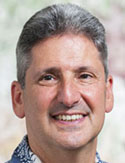
David Lassner
2014–2024
AB, MS with a University Fellowship, University of Illinois at Urbana-Champaign; PhD University of Hawaiʻi at Mānoa
Lassner was the first UH alumnus to lead the university. He served more than 40 years at UH including as the first chief information officer and then first vice president for information technology. Lassner’s strong management practices ensured financial stability for the 10-campus system through the COVID-19 pandemic and economic recessions. Under his leadership, metrics of student success improved across the UH System, and enrollment remained strong. Lassner advanced UH’s commitment to become a model Indigenous-centered university that cares for Hawaiʻi, Native Hawaiians and all of Hawaiʻi’s people.
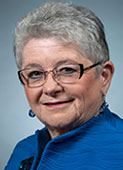
M.R.C. Greenwood
2009–2013
AB 1968, Vassar College; PhD 1973, The Rockefeller University; Postdoctoral Fellow 1974, Columbia University
Greenwood, an internationally respected scientist and higher education policy expert, was the first female president. She led the university through a deep recession, and launched the HI² innovation agenda. The UH Cancer Center, the new West Oʻahu campus, Pālamanui and the Hawaiʻi Graduation Initiative, are among the projects that were completed or advanced during her tenure.
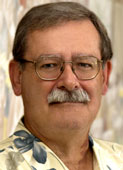
David McClain
2004–2009
BA 1968, Kansas; PhD 1974, MIT
McClain provided stable leadership as the university successfully completed the largest fundraising effort in the state. During his tenure, UH Hilo opened a School of Pharmacy and UH Mānoa consolidated Hawaiian studies and language programs into the Hawaiʻinuiākea School of Hawaiian Knowledge.
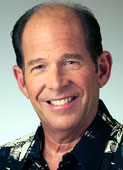
Evan S. Dobelle
2001–2004
BA 1983, MEd 1970, EdD 1987, Massachusetts-Amherst; MPA 1984, Harvard
Dobelle pushed greater campus independence, establishing chancellors at UH Mānoa and each community college.
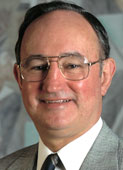
Kenneth P. Mortimer
1993–2001
AB 1960, MBA 1962, Pennsylvania; PhD 1969, UC Berkeley
An expert in higher education policy, Mortimer expanded university autonomy and oversaw the first comprehensive fundraising campaign. He institutionalized service learning, addressed maintenance backlogs along with new construction and tackled articulation between campuses and faculty pay inequities but had to grapple with declining state resources.
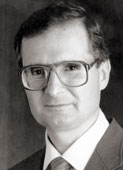
Albert J. Simone
1984–1992
BA 1957, Tufts; PhD 1962, MIT
Simone lobbied for greater independence from the legislature’s control in order to retain accreditation. During his tenure, UH Mānoa consolidated departments, research institutes and federal cooperative programs from different parts of campus into the School of Ocean and Earth Sciences and Technology, a leading education and research resource.
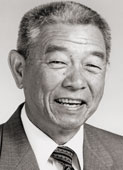
Fujio Matsuda
1974–1984
BS 1949, Rose Polytechnic Institute; ScD 1952, MIT
The nation’s first Asian American university president used political ties to keep the budget afloat and court the legislature. During his tenure, Mānoa built the Institute for Astronomy, Korean Studies Center, Marine Sciences Building, law school and library, Kahanamoku Pool and PE/athletics complex. The School of Architecture opened and West Oʻahu College became UH West Oʻahu.
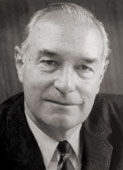
Harlan Cleveland
1969–1974
AB 1938 Princeton; LLD: 1956 Rollins College, 1960 Franklin and Marshall College, 1962 Middlebury College, 1962 Kent State, 1968 Arizona State, 1972 Korea; LHD: 1958 Alfred, 1966 Kenyon College; DCL: 1966 American; LittD 1968, Pittsburgh
Rhodes Scholar and diplomat Cleveland established UH’s law school, extended the medical school, created UH Hilo and appointed the first Mānoa chancellor.

Thomas H. Hamilton
1963–1968
BA 1936, LLD 1961, DePauw; MA 1940, PhD 1947, Chicago; LHD 1960, Alfred; LLD 1961, Rollins College; LLD 1961, Colgate; DH 1967, Oakland U (Michigan); LLD 1967, Southern California
Hamilton finessed a sizeable budget increase to deal with a growing student body and set the wheels in motion for UH’s medical and law schools. He resigned amid protest related to the Vietnam War and a controversial faculty tenure case.
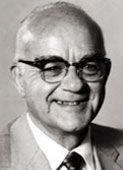
Laurence H. Snyder
1958–1963
BS 1922, ScD 1947, Rutgers; MS 1924, ScD 1926, Harvard; ScD 1960, Ohio State; HHD 1962, North Carolina
Groundbreaking geneticist Snyder enjoyed generous tax support that enabled the university to construct 37 new buildings, double enrollment and institute new academic programs. He took particular pride in the monkeypod shaded mall, but alumni protest led to reversal of his decision to eliminate the football program.
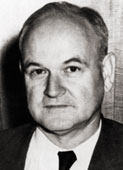
Paul S. Bachman
1955–1957
BS 1922, Ohio State; MA 1925, PhD 1927, Washington
Bachman divided history/political science into two departments, appointing the first political sciences chair. His tenure was cut short by his untimely death just 14 months after taking office as president.

Gregg M. Sinclair
1942–1955
BA 1912, LLB 1949, Minnesota; MA 1919, LLD 1954, Columbia; LLD 1951, Ohio State; LLD 1955, UC Berkeley; HHD 1956, Hawaiʻi; DLit 1960, Keio
A founder of the university’s Oriental Institute, forerunner of the federally funded East-West Center, Sinclair attracted prominent figures and leading minds as guest lecturers and participants in the East-West Philosophers’ Conferences. He maintained and developed university programs during the difficult war years.
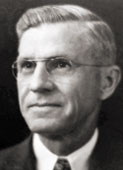
David L. Crawford
1927–1941
BA 1911, LLD 1933, Pomona; MA 1912, Stanford; LLD 1957, Hawaiʻi
An entomologist and athletics coach, Crawford developed one of the nation’s largest summer school programs and sought internationalism as an avenue to world peace.

Arthur L. Dean
1914–1927
BA 1900, Harvard; PhD 1902, Yale; LLD 1947, Hawaiʻi
A chemist recruited from Yale, Dean saw the transformation of the College of Hawaiʻi into the University of Hawaiʻi and growth in enrollment from 21 to 874 students. He later served on the Board of Regents.
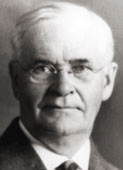
John W. Gilmore
1908–1913
BSA 1898, MSA 1906, Cornell
The first president was an agriculture professor who established schools in China and the Philippines. He recruited several colleagues from his former institution, Cornell University, who shared his belief that land-grant institutions should serve the public and democratize higher education.
This page does not include those who served UH as interim presidents.

